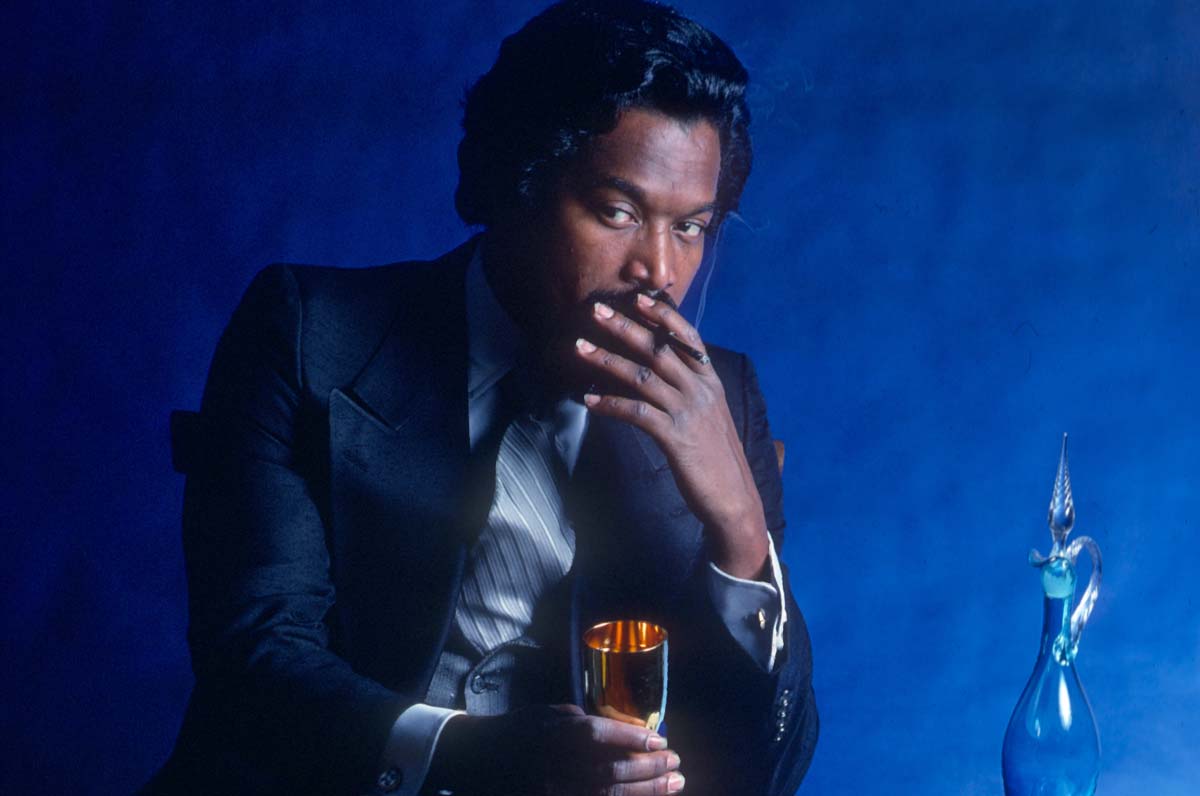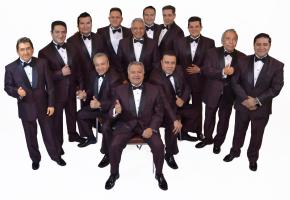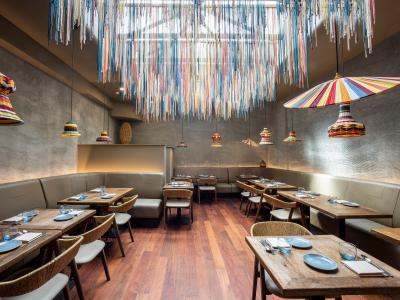It only takes one glance at the human wonder that was Pete “El Conde” Rodriguez to realise why they called him ‘The Count’. But Pedro Juan Rodríguez Ferrer was much more than a pretty face and the epitome of style, he was a consummate sonero (vocal improviser), dancer, and showman. His good looks, coiffed hair, chic attire and regal air were merely the cherry on the cake to one of Fania’s most loved artists and cherished musical legends. Rodríguez featured on some of Fania’s most successful albums including Cañonazo (1964), Pacheco at the World’s Fair (1964), La Perfecta Combinación (1970), Los Compadres (1972), Tres De Café y Dos De Azúcar (1973), and Pacheco y El Conde con Celia Cruz (1980).
Though boricua through and through, Pete El Conde was considered to be “the most Cuban of Puerto Rican soneros:” his primary influences were Pedro Ortíz Dávila (Davilita), Miguelito Cuní, Cheo Marquetti, Abelardo Barroso and Benny Moré. By embracing the smooth vocal style of quintessential Cuban crooners like Beny Moré and Miguelito Cuní and afro-pop flavours of La Sonora Matancera, he created a unique fusion style of his one
Pete possessed the rare combination of the gritty ingredients to make some serious salsa combustion, but the professionalism and self-control that failed some other edgier salsa vocalists like Hector Lavoe and La Lupe. El Conde was reliable to a fault. He never made a bad record and he never lost his naturally aristocratic demeanor in the process or his perennial smile.
Rodríguez was born in Ponce, Puerto Rico, in 1933, the second of three children to Emiliano Rodríguez and Anatilde Ferrer Colón. He grew up in the barrio La Cantera. At an early age, he played the bongos with his father’s quartet, El Conjunto Gondolero. At thirteen, Rodriguez moved to New York and lived in Spanish Harlem. He graduated from Patrick Henry High School and The New York School of Printing and worked briefly before he was drafted by the U.S. Army. From 1953 to 1956, Rodríguez served as a paratrooper and was stationed at Fort Benning and Fort Bragg in the southern part of the United States, where racial segregation was rampant.
After discharge, he returned to New York. There, he honed his chops with La Oriental Cubana, followed by Los Jovenes del Estrella de Cuba (1958-1961). The internship led to his first recording, which set him in the sights of Dominican bandleader and Fania co-founder Johnny Pacheco: Pacheco spotted El Conde singing with pianist Johnny Soler at a local club Los Panchos – and swiftly invited him to become part of his band.
Rodríguez’s collaboration with Pacheco on the 1963 release Suavito for the Alegre label and as lead vocalist on the 1964 LP Cañonazo, the first release on the Fania label, hailed in a new era for Latin music. This session marked Pacheco’s momentous transition from the innocence of Cuban charanga to the traditional conjunto format à la Sonora Matancera.
Pacheco always claimed that El Conde was his favourite singer. And you only need to listen to his songs to see why: the understated elegance El Conde’s delivery, On “Alto Songo,” an old fashioned hit single from the 1964 album Pacheco At The New York World’s Fair; his timing is implacable in “La Esencia del Guaguancó” - a salsa dancer’s paradise which El Conde continued performed extended versions of in his concerts until his death.
Another massive hit, “Dulce Con Dulce” included sharp touches of bongo, a swirling trumpet melody and a devastating chorus. The hypnotic “Primoroso Cantar” is from the 1973 session Tres De Café Y Dos De Azúcar, considered by many as the very best of the duo’s many collaborations. As a member of the Fania All-Stars, Rodríguez traveled the world and helped make salsa famous across the globe.
In 1974, Rodríguez left the Fania All-Stars and embarked on a career as a soloist. But, true to his character, the split was anything but acrimonious, and Pacheco was the musical director on El Conde, the singer’s 1974 solo debut, which included autobiographical “El Conde Negro” and “Fiesta En El Cielo,” a wonderful example of the crooner’s majestic touch when it came to interpreting smoldering boleros. From that moment on, El Conde would alternate his blossoming solo career with the occasional reunion record with Pacheco. During this period he recorded some of his most memorable albums El Conde (1974), Este Negro Sí Es Sabroso (1976) and A Touch of Class (1977).
‘Este Negro Sí Es Sabroso' was one of his biggest commercial successes. Boosted by a tight band and brilliant Tite Curet Alonso compositions, the record is seamless from start to finish. The opening track “Catalina La O” is to this day one of the hits that defined the very essence of the ’70s salsa explosion. “Pueblo Latino” - a moving call for unity among Latinos - proved he could not only be romantic but was a deep think and had no fear of delivering a sociopolitical message in the guise of a hypnotic groove.
Indeed, even though he enjoyed the riches and fame of an acclaimed salsero, El Conde’s early life was seeped in sadness: the death of his father when he was still a child; the racism that surrounded him during most of his youth; and a painful struggle to establish himself as a respected musician. This may explain why so much of the singer’s repertoire is melancholy by nature.
Culled from the 1979 Soy La Ley album, “Recuerdos De La Escuela” is a bittersweet tune whose upbeat cowbell beat contrasts the nostalgic lyrics about returning to his hometown and wondering whatever happened to his old classmates. Richly layered and deceptively complex, it is one of the standout tunes from El Conde’s later albums.
Finally, one cannot talk about El Conde, without mentioning his collaboration with Celia Cruz, notably for the 1980 Fania All Stars session Commitment. “Encántigo” has the gritty authenticity of two vocal great But it also boasts a near-baroque string arrangement characteristic of the over-the-top productions that Fania recorded in the late ’70s. The clash between authentic rumba beats and orchestral grandeur is particularly satisfying.
Pete “El Conde” Rodríguez died in his sleep on December 1, 2000. He had remained active until the very end, recording a track for Tito Puente’s last album (Masterpiece, the timbalero’s collaboration with keyboardist Eddie Palmieri) and doing the occasional live performance with various lineups of the Fania All Stars. To this day, his unassuming demeanor and fiery soneos are sorely missed.
If you want to hear the best salsa you can no longer hear ANYWHERE in London, come to our Salsa Stage at LatinoLife in the Park, Sat 5 August, Walpole Park. Tickets here
















